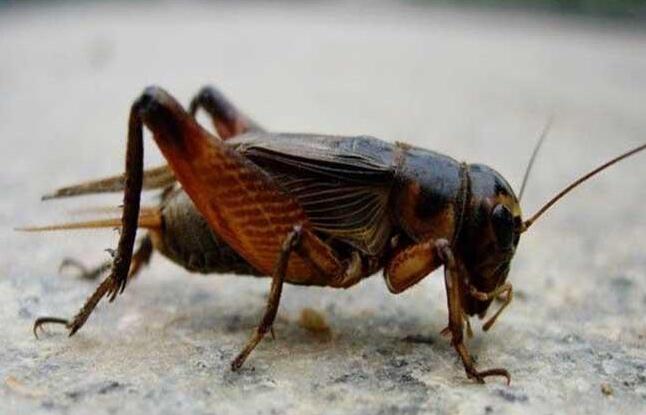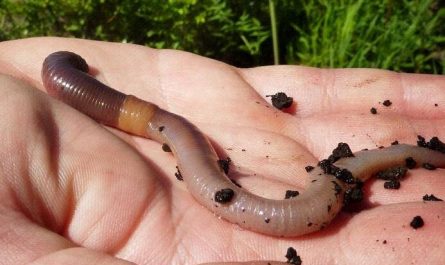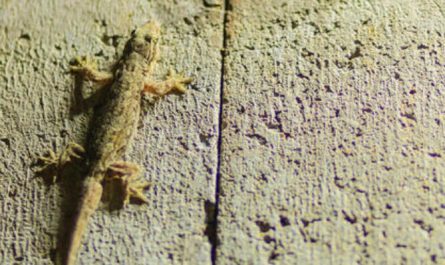The reason why crickets sing with their wings
Scientists discovered that on the right wing of the cricket, there is a short thorn, like a file we usually use. On the left wing, there are thorns like a knife. The wings on both sides are joined together and rubbed against each other so that they can make a pleasant sound.
A cricket is a cricket, also called a cricket, a weaving, a general insect, etc. It is a very cute little animal. Regardless of how young it is, it is an “old antique” in the same era as dinosaurs, 140 million years ago.
Crickets are good at screaming and combative. Its cry is not as noisy as a cicada, but it gives people a peaceful and relaxing feeling. On a quiet night, putting on a fleece, making a cup of coffee, caged a cricket, accompanied by its cheerful cry, reading and writing, is a very pleasant thing.
The cricket’s call is also very interesting. It is not like us humans who make sound by vocal cords, nor is it like birds that make sound by bellows, but by the friction of their wings. The cricket’s pronunciation device is on the forewing, where there are a pair of spiral-shaped wing membranes, the right wing has a file-like wing membrane, and the left wing is a thorn-like wing membrane. When the wings are opened and rubbed left and right, it will Make a tone.
Only males can bark crickets, but females can’t bark because they don’t have a speaker. Therefore, males call “because of love”. When they find “beauties with sweet looks and outstanding temperament”, they will make clear and tactful calls to woo females.
The cry of crickets is the most colorful among insects. When the courtship is successful, they will mate to reproduce offspring. At this time, the males will sing pleasantly, as if to say: “I’m going to be a father!”
When two males meet together, the situation is different. When the two males meet and the brave wins, they will make a provocative cry. The final winner will make a clear, bright, continuous call, and the loudest voice, as if to show off his victory.
If they did not meet, but only heard each other’s calls from far away, they would still increase their vigilance and make short, intense calls to remind each other that the inherent territory cannot be violated.
Of course, there is another kind of “humming” that we usually hear, which is a kind of “humming” that is idle and entertaining. The timbre is clear and loud, and we can tell the quality of them through its tweet at this time.
Cricket’s calls can be roughly divided into these five types. Different calls will be made under different circumstances, which requires us to listen carefully. Walking in the fields of late autumn, you will hear the calls one after another, and then you will stop and listen, and you will know what these little guys are doing.
Life habits of crickets
Habitat
Crickets live in burrows, often on the ground, under masonry, in soil caves, and among grasses. Activities at night.
Omnivorous, eat all kinds of crops, saplings, vegetables and fruits. Certain behaviors of crickets can be induced by specific external stimuli.
Crickets are withdrawn by nature. Generally, they live independently. They are never allowed to live with other crickets (a male also lives with another female during mating). Therefore, they cannot tolerate each other. Together, they will fight. One male cricket can live with multiple female crickets.
tweet
Crickets use their wings to make sounds. On the right wing of the cricket, there is a short thorn like a file, and on the left wing, there are hard spines like a knife. The left and right wings are one and the other, rubbing against each other. Vibrating wings can make a pleasant sound.
In addition, the different tones and frequencies of the crickets’ chirping sounds can express different meanings. The long and loud cricket chirping sounds at night are to warn other people of the same sex not to enter, but also to court. When other same-sex enters its realm, it screams majestic and hastily as a solemn warning.
It usually starts in August in the summer, and it is usually the best in the wild at 20 degrees. It stops when the weather turns cold in late October. When a male encounters a female, its chirping sound can be changed to “chirp, chirp”, and a trembling “squeak…” sound when mating. When two males meet, they first scream with their wings upright, and then head to head, each bite each other with large mouths like pliers, and kick each other with their feet, often for 3 to 5 rounds.
During the breeding season, male crickets vibrate their wings more vigorously and make beautiful sounds to attract the opposite sex.
Sex difference
The most obvious difference between male and female is the ovipositor on the tail. The female is larger, with a pinhole or spear-shaped oviposit tube exposed at the rear end. Together with the tails on both sides of the buttocks, it appears to have three tails at first glance, with small wings and no screaming; the male does not have a tail. The needle-shaped ovipositor has only two tails that grow obliquely from the tip of the hip to the rear. They can sing, fight, and kill each other. In some areas in the north, male crickets are called crickets and female crickets are called oil gourds. Male crickets fight each other in order to compete for food, consolidate their territory and possess females. Both Gryllidae and katydidae of the cricket family are song insects, but only the male can make a sound. It uses the friction of its wings to make sound.
The males build soil holes to live with the females. He likes to live in shady, loose and humid environment. When the insect population is too dense, they often kill each other. And go out to search for the tender stems, leaves and seeds of peanuts, and transport them back to the burrow for storage to feed the newly hatched nymphs. The newly hatched nymphs live in groups and go out for food a few days later, burrowing separately.






